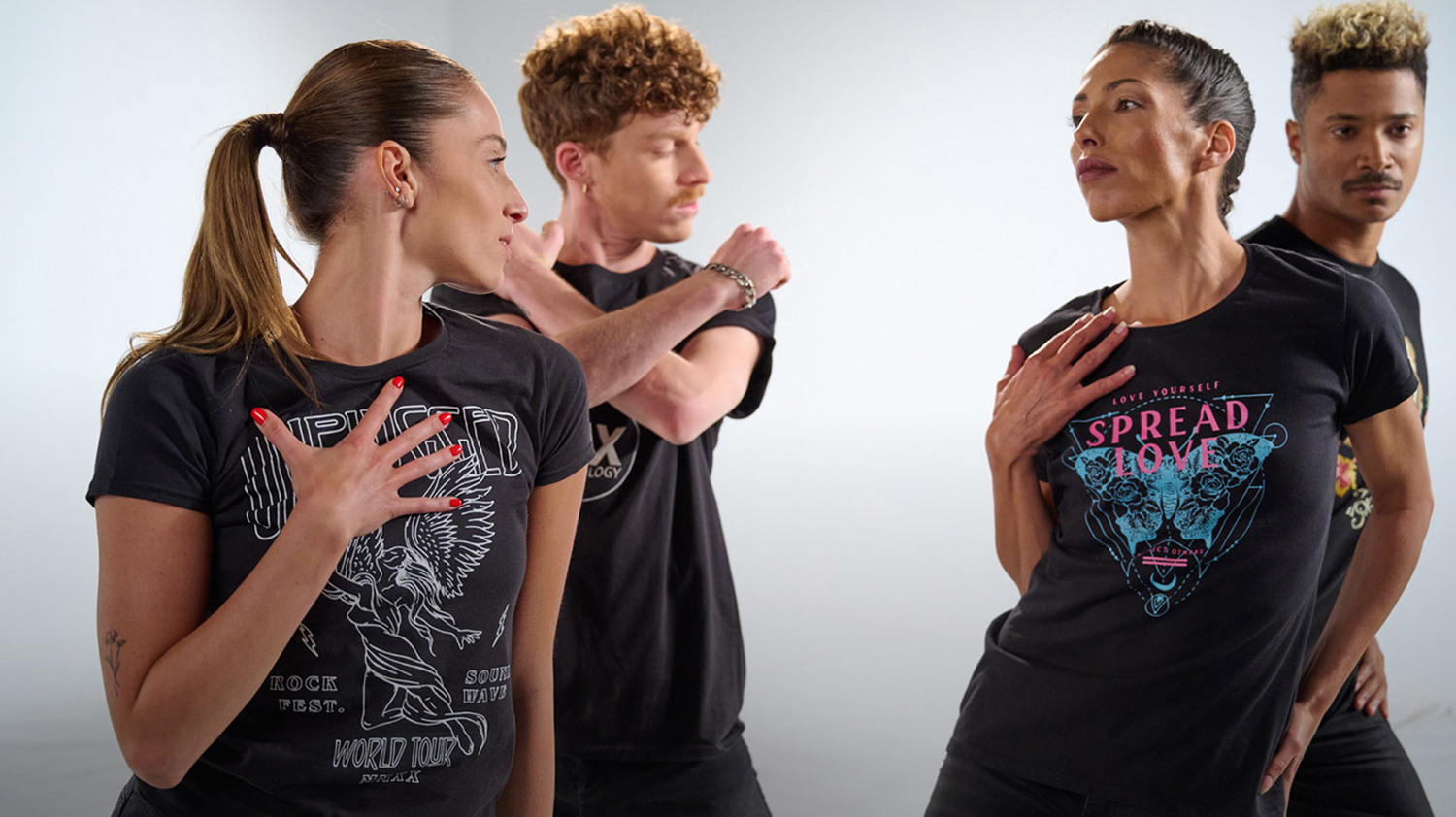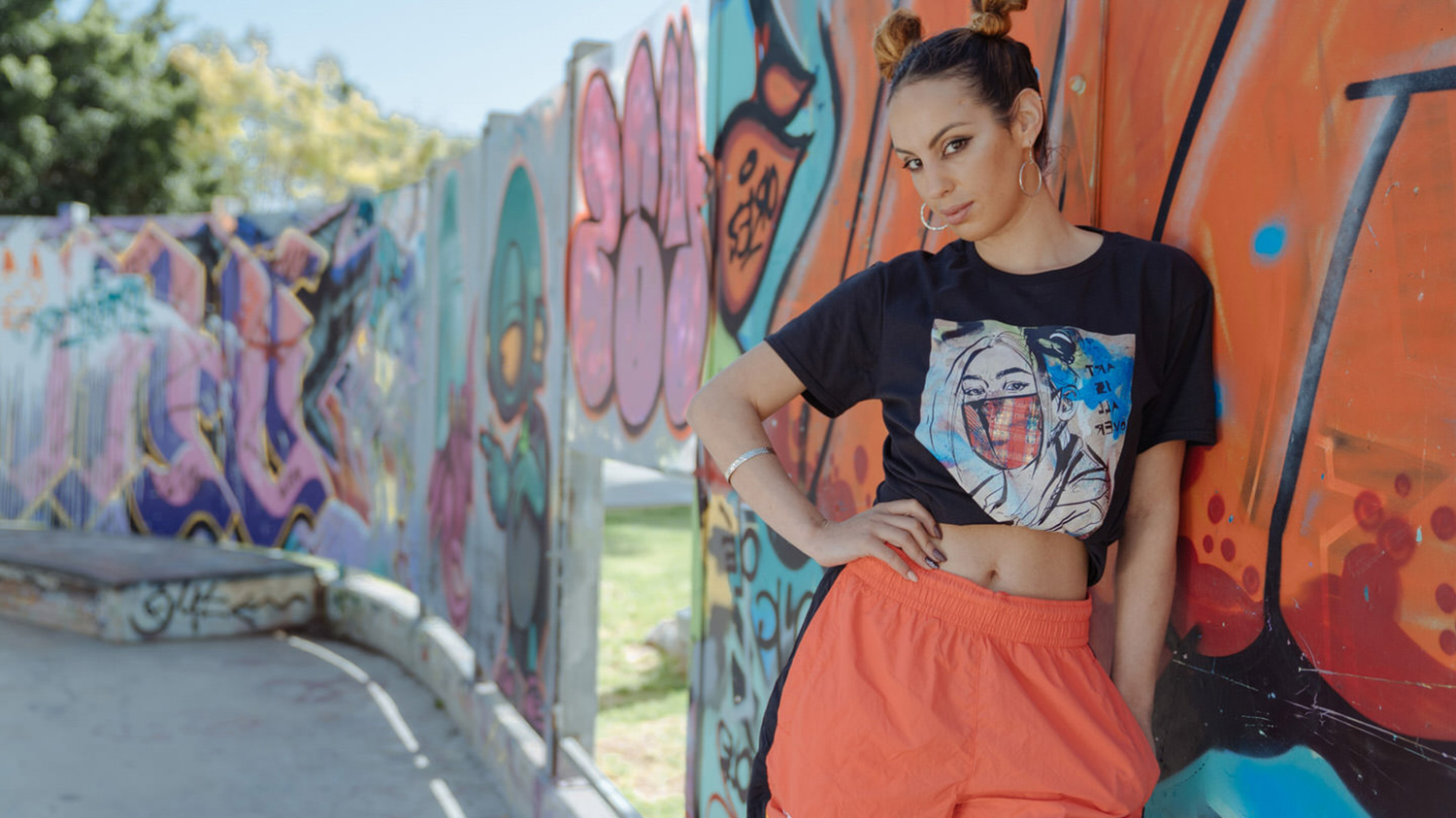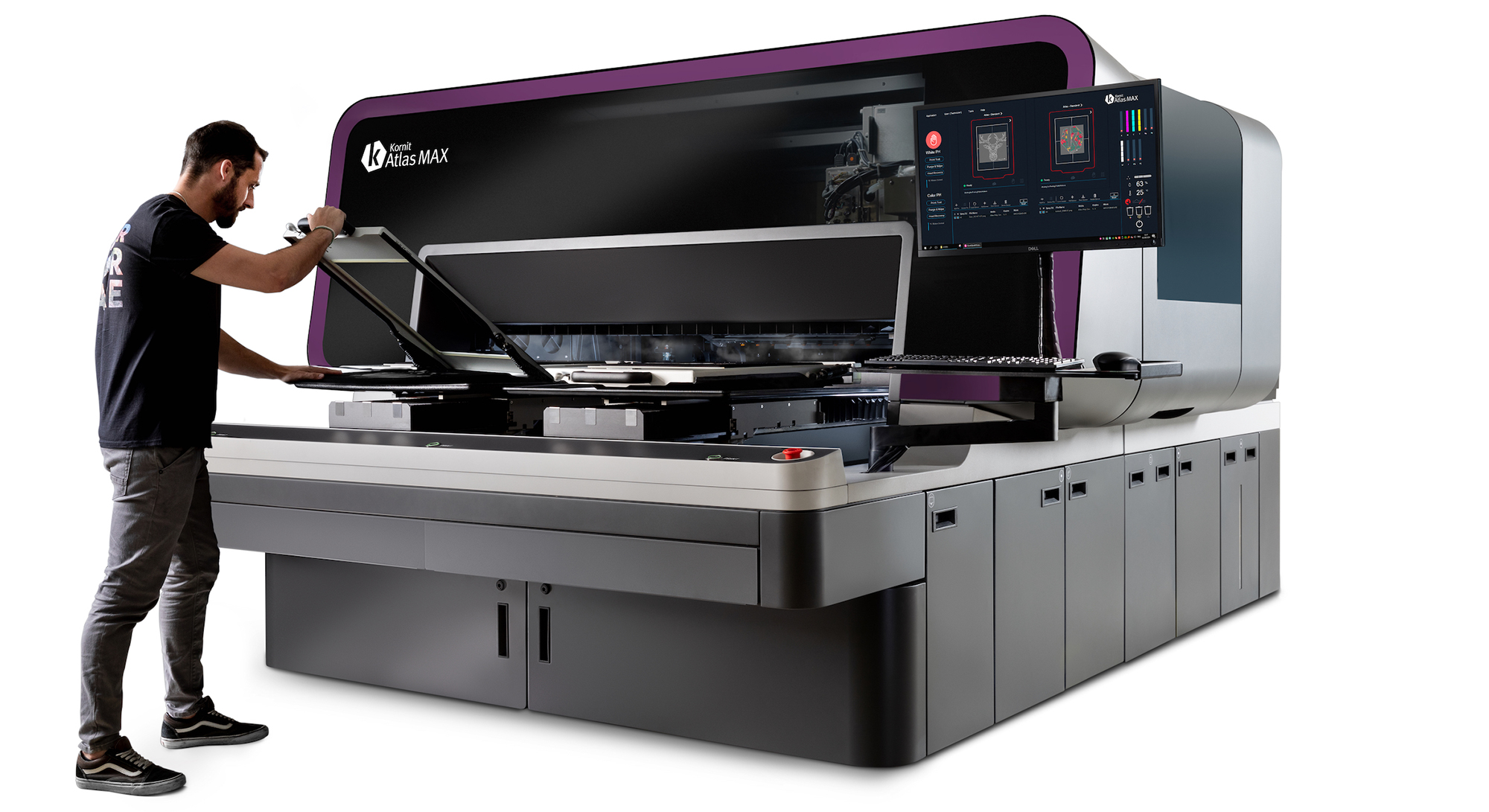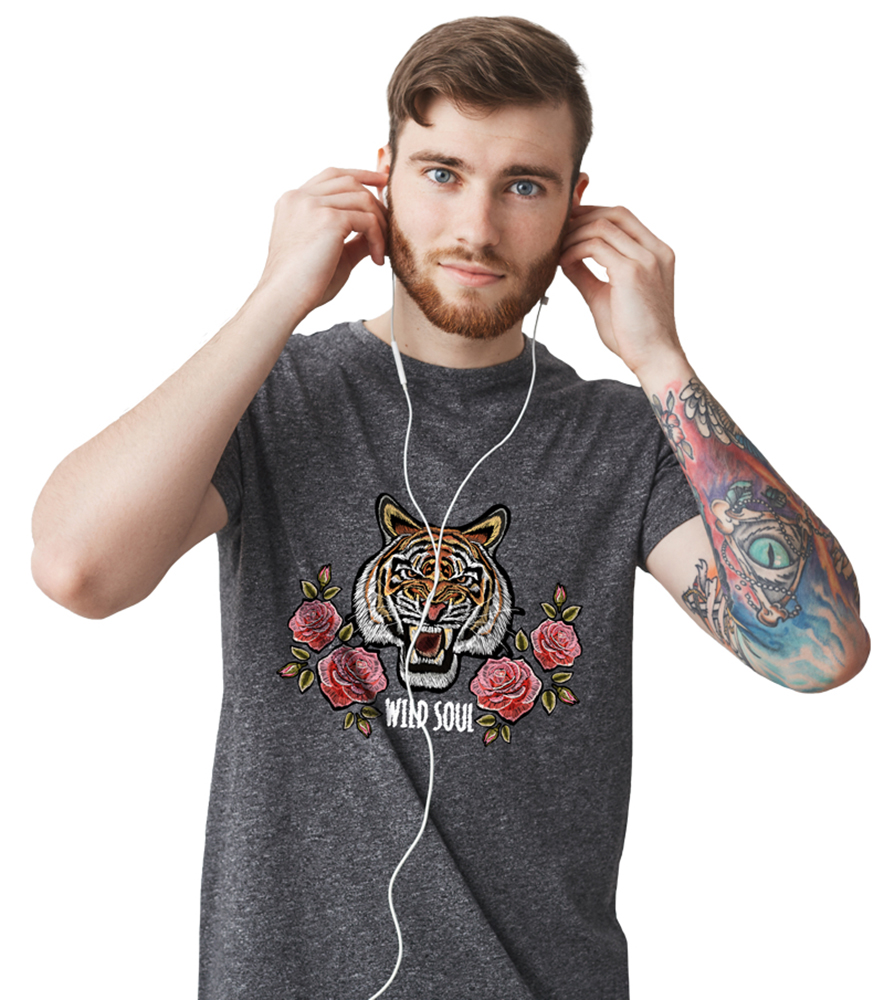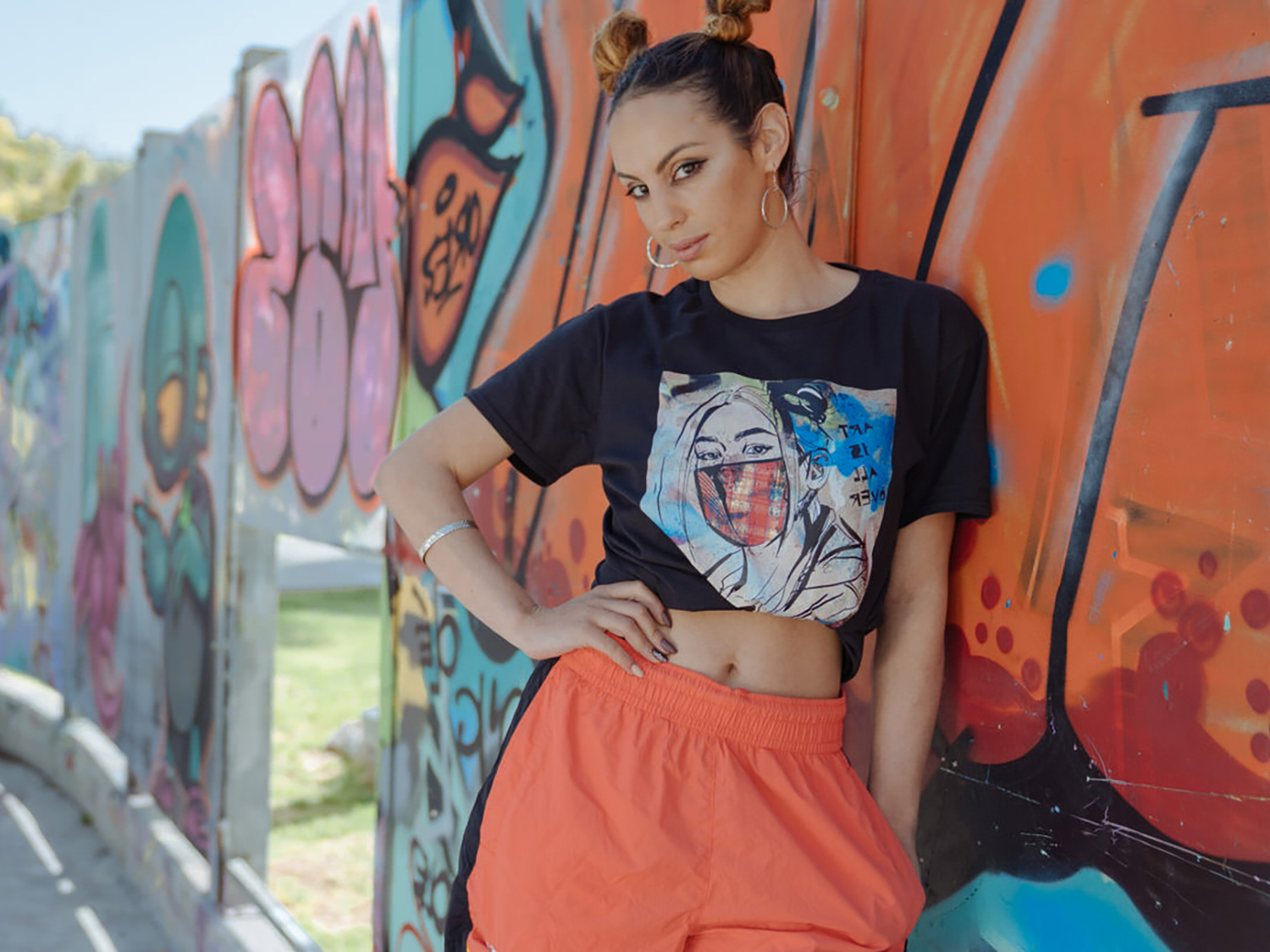
Direct-to-garment printing: worth the investment?
-By Robert Zoch, Global Content Manager at Kornit Digital
Sponsored by Kornit Digital
30% of all textile items produced today are never purchased.
That’s 21m tons of textiles going straight to the trash heap. That’s 28tn litres of water—enough to hydrate 300 million people for a lifetime, wasted on produce the market doesn’t want.
If you’ve been dependent on the 18-month, forecast-based fashion cycles, what the rise of Amazon and the so-called “retail apocalypse” failed to communicate, the rise of a global pandemic economy certainly made clear. This was that the old way won’t work anymore. Your business is being disrupted, whether you act or not. The question is, will you adapt and thrive, or stand by and nosedive?
The bad news is your market is fickle and unpredictable, and the internet gives consumers the opportunity to buy anything they want, from whoever will offer the best terms.
The good news is the tools are now available to empower businesses like yours to meet those fickle and unpredictable demands in real time and build a streamlined, end-to-end model of efficiency that gives them what they want while making your operations more profitable. This is because you only make what you sell and need never rely on forecasting again.
Create on demand and long-term security
Widely dispersed, international supply chains are ill-suited to the needs of today’s wired, see-now-buy-now consumer base. When you’re selling via an online store, “shelf space” is virtually unlimited, but physically producing each piece to match that inventory is inherently slow and cumbersome and does nothing to solve your waste issue. That is where a corresponding digital production process meets the challenges presented by digital shopping.
Digital direct-to-garment (DTG) production technology gives brands, fulfillers and print service providers the versatility they need to create on demand and thus minimise inventory risk while offering consumers variety and quality. By introducing a single-step production process, which eliminates the need for pre- and post-treatments, Kornit Digital has made the deal even sweeter. Their systems use eco-friendly, pigment-based inks compatible with any number of common and popular fabrics to serve many types of buyers. T-shirts, hoodies, onesies, jackets, stretchy yoga pants…pick your colour and if the design can be rendered onscreen, it be printed on that piece, with impressive colour accuracy.
“Speed of print, the reliability factor and the cost per print were the three main factors for me,” said Daragh Murphy of Ireland-based Hairy Baby Clothing Company. “We have a lot of demand for crazy graphics, and the only way we can reproduce these is by using Kornit technology.”
The right tool for the job
This technology gives print shops a powerful new tool for the right job. Screens will always be there for the large-run, bread-and-butter jobs that don’t use too many colours. But when you need to create something with minimal setup time, unlimited colours, in small numbers, or maybe even just produce some samples without the hassle that comes with analogue processes, digital makes it happen at the push of a button.
These systems offer the capability to print whatever the market demands, in brilliant detail, unlimited colours and any quantity. What’s more, it’s always profitable because their speed makes it possible to sell first, then produce and ship within days or even hours.
Here’s where it gets crazy.
People still want embroidery. People still want dye sublimation. People still want vinyl heat transfer. But each of those methods takes time, produces waste and require a different machine with a different skill set. So Kornit said, “Why not just make them all one machine?”
That brings us to Kornit’s MAX technology, which give users every benefit they’ve come to expect from Kornit’s patented sustainable, single-step production process—but also 3D imagery that seems to leap off the surface. It simulates stitching. It simulates vinyl heat transfer. It simulates dye-sub impressions and not only on white polyester. And it does all of this using one ink set, with one machine, with a smaller footprint, both carbon and on the production floor.
Word on the street
Georg Stricker of Germany-based Boender & Beutel was one of the first to gain hands-on experience with this new equipment.
“The colours, I must say, are exceptionally good,” Stricker said of the technology. “The designs are brighter and more beautiful. You can feel it’s something that is unique in the textile industry.”
Hanne Dinkel of Germany-based Spreadshirt also experienced Kornit MAX technology in her production operations and discussed the versatility it offered.
“With this technology, you can print like embroidery, or you can print like screen printing,” says Dinkel. “We are printing on demand and that means we need to handle a lot of different garments. I think it’s going to be a game-changer in the print-on-demand business.”
Putting all the pieces together
“There’s a growing realisation and acceptance that on-demand production is the answer to meet the demands of today’s consumer,” says Kornit Digital CEO Ronen Samuel, upon announcing the release of Kornit’s MAX technology. “Kornit’s MAX technology defines the future of on-demand, sustainable textile production and the future is here now. MAX offers a rare sustainable symbiosis, more creativity and less waste.”
At ITMA 2023, Kornit will unveil its Apollo direct-to-garment platform alongside an expanded end-to-end fulfillment ecosystem. Built on the company’s proven MAX technology, Kornit Apollo delivers the highest retail quality with full automation control and integrated smart curing processes. It’s the most comprehensive digital solution for both nearshore short- and medium-run mass production, delivering optimal total cost of ownership and 400 prints/hour, per operator.
Have your say. Tweet and follow us @WTiNcomment


